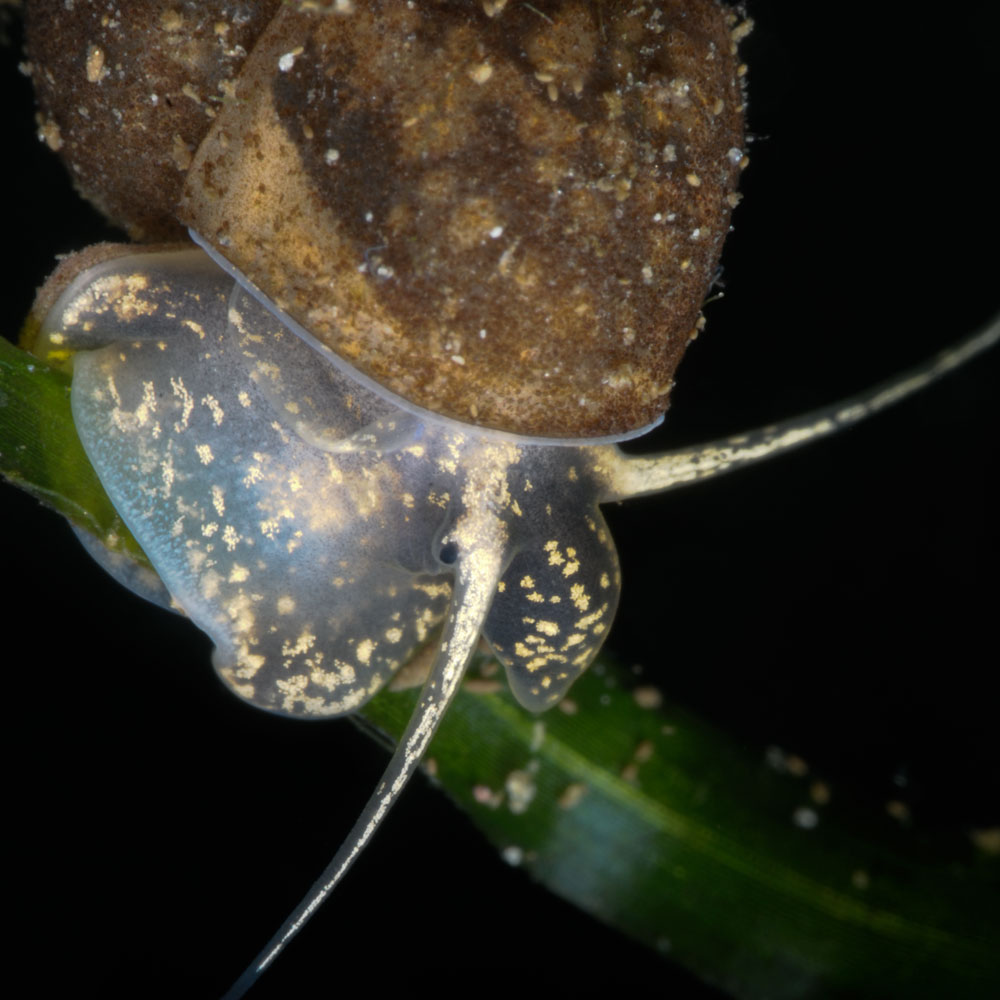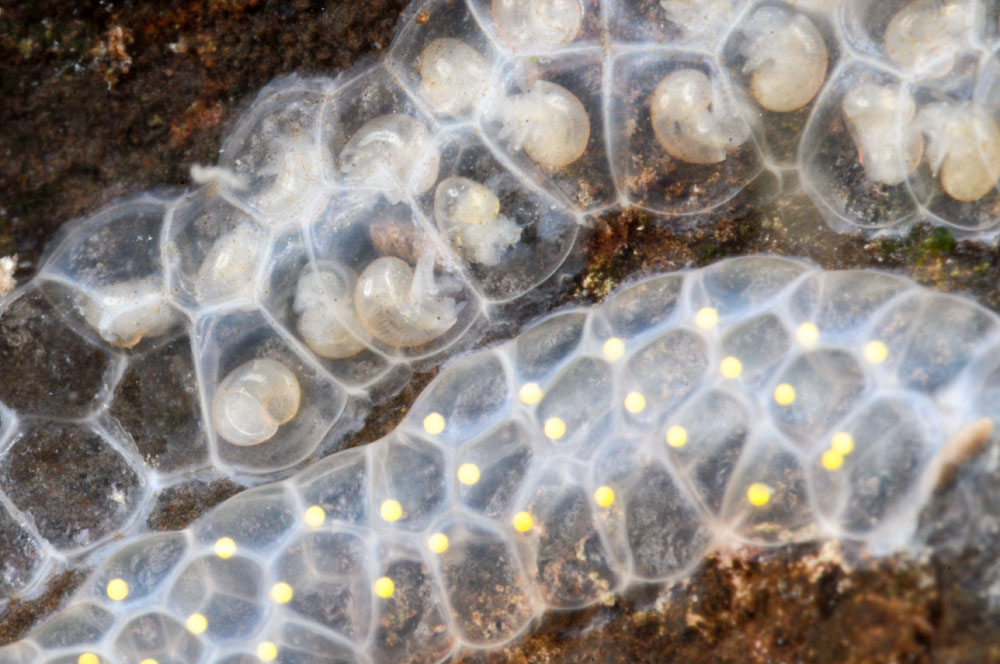

De grote diepslak (Bithynia tentakulata). De grote diepslak is een van de meest voorkomende slakken van Nederland. Ook in de Boschmolenplas is ze samen met Jenkins’ waterhorentje (Potamopyrgus antipodarum) de meest voorkomende slak. Het waterhorentje komt oorspronkelijk uit Nieuw Zeeland en blijft vele malen kleiner dan de grote diepslak. De grote diepslak is een echte Europese soort en is hier thuis.
De diepslak heeft kieuwen en hoeft daarom niet naar het wateroppervlak voor zuurstof. De schelp is kegelvormig en heeft tot 6 windingen, ze is beige, bruin, geel of groenachtig vaak met lichtere vlekjes, vaak ook begroeid. De hoogte tot 12 mm, breedte 7 mm. De diepslak zelf is grijs tot bruin met witte tot gelige vlekjes. Door de kleur van de slak is ze bijna niet met andere slakken te verwarren. De diepslakken zijn van gescheiden geslacht, er zijn mannetjes en vrouwtjes. De eitjes worden van april tot augustus afgezet. In de Boschmolenplas vind je dan massa’s van deze eitjes. Ook de eitjes van de diepslak zijn makkelijk te onderscheiden van andere slakkeneieren. De eitjes worden in een dubbele rij gelegd met een zigzag lijntje tussen de rijen. In ieder eikapseltje zit een geel puntje. De slakken zijn het hele jaar te vinden maar in de winter zijn er niet zoveel. Ze zitten op stenen, op het zand en in de waterplanten, kortom, je kunt ze overal vinden. Kijk de volgende duik eens goed in de waterplanten. Grote kans dat je daar een bruin slakje vindt met wit/gelige tekening. Dit is dan de grote diepslak.


Tekst en Foto’s: Silvia Waajen
The faucet snail is one of the most common snails in the Netherlands. Together with the New Zealand mud snail (Potamopyrgus antipodarum) they are the most common snails in the Boschmolenplas. The New Zealand mud snail originates from New Zealand and stays much smaller than the faucet snail. The faucet snail is a real European species and belongs here.
The faucet snail has gills, therefore they don’t have to go to the water surface for oxygen. The shell is cone shaped and has op to 6 windings, the shell is beige, brown, yellow of greenish often with lighter spots, also often overgrown. The height up to 12 mm, width up to 7 mm. The snail itself is gray to brown with white to yellowish spots. Because of the color it’s almost impossible to confuse it with other snails. The snails are of separate gender, there are males and females. The eggs are laid from April up to August. In this time you can find a huge amount of these eggs in the Boschmolenplas. The eggs from the faucet snail are also easy to distinguish from other snail eggs. The eggs ere laid in a double row with a zigzag line in the middle of the rows. In every egg capsule there is a yellow dot.
The snails can be found all year around but in wintertime there aren’t so many. They are on rocks, on the sand and in water plants, in short, you can find them everywhere. Next dive, take a good look around in the water plants. Big chance you will find a brown snail with white/yellowish spots. This will be the faucet snail.
Zorgeloos duiken en snorkelen begint bij Scuba Adventures Europe. Wij helpen jou de onderwaterwereld te ontdekken met een duikuitrusting die naadloos aansluit op jouw wensen en behoeften.
In onze online en offline duikwinkels vind je als duiker alle benodigdheden om van iedere duik een onvergetelijke ervaring te maken.